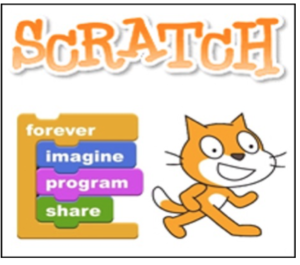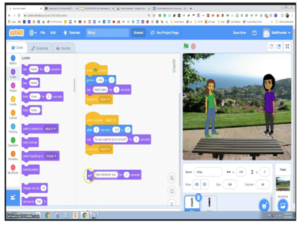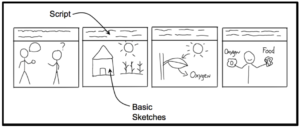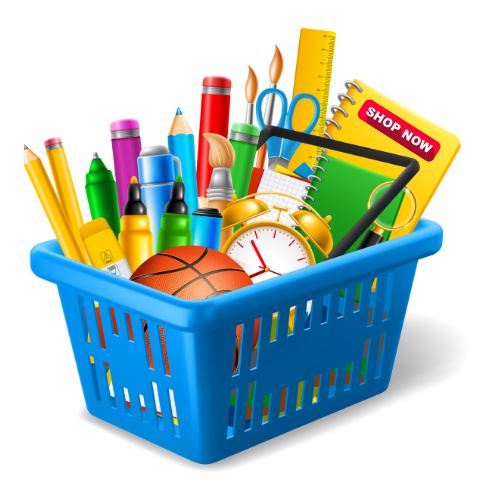How to Use Scratch in The Classroom
Today In this article you will get knowledge about How to use scratch in the EFL Classroom
Creating learning environments that are engaging and have real-world applications for EFL learners can be challenging. This article addresses this challenge by integrating STEM into the EFL university classroom and by having learners create computer animated stories using free online software like Scratch.
The Short Version
Creating learning environments that are engaging and have real-world applications for English as a Foreign Language (EFL) learners can be challenging. One way to meet this challenge is by having students create computer animated stories or scenarios using free computer animation applications.
One such application is called Scratch. Scratch is a web-based application developed by the Scratch Team at the Lifelong Kindergarten group at MIT Media Lab. This article looks at ways to integrate basic computer programming into the EFL university classroom by having learners create computer animated stories using Scratch.
Introducing SCRATCH
Engaging our learners in the classroom can be a challenge. You might be teaching in a classroom where students are reluctant to speak, or your students might have difficulty staying focused. I have experienced both scenarios in my teaching career. I found that creating tasks relevant to both the ‘real world’ and the curriculum brings a more visual sense of purpose among my learners.
That is, to bring more realism to the classroom my tasks are based on situational learning theory. Situational learning, in the sense I am using it for this article, was brought forth by Lave and Wenger (1991).
According to these authors, situational learning is an active process where the learner plays an active part by physically becoming involved in ‘real-life’ activities, not just listening and taking notes (See also Gawande & Al-Senaidi, 2015).
I have found that this can be particularly challenging in the EFL classroom with science and engineering students. One way of connecting with students in a relevant way is by harnessing educational technology that is more relatable to their educational interests, and that is more hands-on. Specifically, the use of the Scratch iPad application to teach English as a Foreign Language through real-life skills like problem-solving and teamwork. In this article, I will explain what Scratch is and how I use this Ed-Tech tool in the university classroom. I will also discuss how this tool can be used in a social distancing learning environment.
What is Scratch?
Simply put, Scratch is a block-based visual programming language that is freely available at https://scratch.mit.edu/. Designed by the MIT Media Lab’s Lifelong  Learning Kindergarten Group, the purpose of this coding language platform is to encourage 8- to 16-year-olds to learn programming. This open-source, free programming language application encourages learners to create animations, games, and stories.
Learning Kindergarten Group, the purpose of this coding language platform is to encourage 8- to 16-year-olds to learn programming. This open-source, free programming language application encourages learners to create animations, games, and stories.
(See also Sáez-López et al., 2016). Since its inception, Scratch has been utilized in other areas of education that do not focus on computer programming, like teaching English as a Foreign Language.
Engaging EFL Students with Scratch
Using Scratch in the classroom provides another avenue to engage students in a meaningful way. Even those learners who are apprehensive about computer programming will find using the basic programming language user friendly, which has been my experience. I stress to my students that the application was designed for children to learn to program.
The other aspect of calming their nerves is to tell them that they do not need to use Scratch in the English mode. They can switch the user interface language to their first language. I stress to my students that I am only interested in the output of their creations which need to be in English. Another part that I highlight is that Scratch is an open-sourced application so that they can search the Internet and locate pre-made programs and adapt those programs to their task.
To get the students started, I created a vocabulary worksheet that has the vocabulary associated with the user interface. I then asked the students to bring their laptops or iPads to class. This is followed by a step-by-step introduction to the Scratch application.
I provide a few short practice sessions on creating simple programs. For instance, I have the students make their characters move across the screen or change the background. I also have them create voice bubbles and record their voices in the program. The next step is to show them where they can locate sample programs on the Internet. That is, I provide them with a list of websites that have tutoring sessions. For my lower-level language learners, I provide a list of websites that are in their first language. These links and steps are also posted on the class Moodle page.
Types of Projects with Scratch
As mentioned earlier, allowing students to have more control of their learning is very important. Scratch fosters this type of learning where students collaborate, and solve problems while improving their English skills. 
I have used Scratch for both speaking and writing classes. For the speaking class, the students will record their voices and embed these recordings into the program. Similarly, for the writing class, students will insert their written conversation into the program. Each project is scaffolded.
The first stage of the project is for the students to choose their team members and their project topic. This is frequently a topic connected to the themes taught in class or with topics connected with their other courses.
However, I have allowed students to venture into different topics as they are appropriate for a university learning environment. I also make sure that each group has a different topic or focus of a topic. I do this to make sure there is enough difference between the projects to create diversity. The next stage is for each group to create a storyboard.
The storyboard

This part of the project aims for the students to create a visual outline of their project that includes the spoken or written dialogue (the script) between the characters. Once they have finished their storyboard, I have the students hand in their work.
I stress that I am checking their language, not their artistic skills. I also provide feedback on how they can make their dialogue better. While I am checking the dialogue of each project, the students begin writing their programs. If they need assistance in troubleshooting the program, I will help them.
The Last Steps
The second to last stage of the project is for each group to receive peer feedback. The students will post their projects on a designated YouTube site. From here, the students will comment on the posted projects. Each group will then make final changes to their projects and submit them for grading. As a final step, the students will present their projects to the class. That is, the class will watch each group’s project followed by a question-and-answer session.
Group Work and Social Distancing
Building a situational learning environment in the age of COVID-19 can be a challenge. However, as educators, we have found ways to circumnavigate this challenge. There are many online tools that educators can utilize to bring students together in a safe environment. For creating a storyboard, learners can use either Google Drive or Microsoft Teams. This will depend on which platforms are freely available to your students. I do not want my students to spend money on products that are freely available.
Some of the students may not be familiar with these products. To write the programming code as a group is a little more complex. I offer a few suggestions to the group, like the share screen function on Zoom. My chief focus on this part of the process is to facilitate. I want the students to take control of their learning.
Final Thoughts
Creating learning opportunities for our students in the EFL classroom with real-life applications is crucial for fostering deeper language acquisition. By using Scratch to build meaningful learning environments, EFL learners will have another means of associating the language skills they have learned in a different context. Thus, improving their overall language skills.
So, Hopefully, now you understand How to create computer animated stories using free online software like Scratch.
Bibliography
Gawande, V., & Al-Senaidi, S. (2015). Situated Learning: Learning in a contextual environment. International Journal of Computing Academic Research, 4(4), 207-213. http://www.meacse.org/ijcar/archives/70.pdf
Lave. J., & Wenger, E. (1991). Situated learning: Legitimate Peripheral Participation. Cambridge University Press.
Sáez-López, J.-M., Román-González, M., & Vázquez-Cano, E. (2016). Visual programming languages integrated across the curriculum in elementary school: A two year case study using “Scratch” in five schools. Computers & Education, 97, 129–141. https://doi.org/10.1016/j.compedu.2016.03.003







